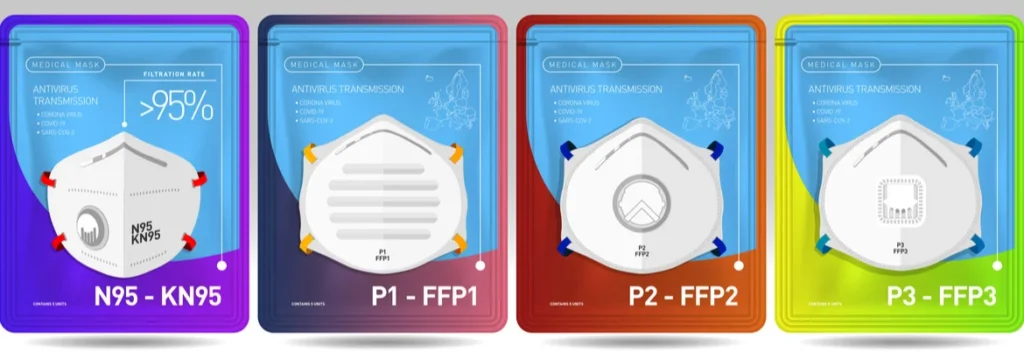As the world continues to battle with different kinds of viruses, face masks have become a crucial part of our daily lives. Wearing face masks can help prevent the spread of the virus, and different types of masks offer varying levels of protection. In this article, we’ll look at the differences between FFP1, FFP2, and FFP3 face masks.

What are FFP masks?
FFP stands for Filtering Face Piece, and FFP masks are designed to protect the wearer from inhaling airborne particles such as dust, fumes, and viruses. They are classified into three levels according to their filtration efficiency: FFP1, FFP2, and FFP3.
FFP1 Face Masks
FFP1 masks offer the lowest level of particle filtration. They are suitable for low-risk environments with no health hazards, such as when you’re gardening or carrying out general cleaning tasks. They can filter at least 80% of airborne particles, including pollen and dust, but they cannot protect against viruses and bacteria.
FFP2 Face Masks
FFP2 masks are the most common type of mask used in healthcare settings. They offer a middle level of protection and can filter at least 94% of airborne particles, including viruses and bacteria. They are suitable for environments with medium levels of health hazards, such as hospitals, construction sites, and industrial settings.
FFP3 Face Masks
FFP3 masks offer the highest level of protection and are designed for use in extremely hazardous environments. They can filter at least 99% of airborne particles, including viruses and bacteria, as well as toxic and carcinogenic dusts. They are suitable for environments with high levels of health hazards, such as mining, chemical processing, and healthcare settings.
Which mask should I wear?
The type of FFP mask you should wear will depend on the environment you’re in and the level of protection you need. If you’re in a low-risk environment, such as walking or cycling outdoors, an FFP1 mask may be sufficient. However, if you’re working in a healthcare setting or in an area with a high risk of infection, such as a hospital or a crowded transport system, an FFP2 or FFP3 mask would be more appropriate.
It’s also important to note that wearing an FFP mask alone is not enough to protect against complex virus. Other measures such as hand hygiene, social distancing, and staying home if you have any symptoms are equally important in preventing the spread of the virus.
Are FFP masks reusable?
FFP masks are not designed to be reusable, and they should be disposed of after each use. This is because they can become contaminated with viruses and bacteria during use, and washing or reusing them can compromise their effectiveness.
FFP masks offer varying levels of protection against airborne particles, including viruses and bacteria. FFP1 masks offer the lowest level of protection and are suitable for low-risk environments, while FFP2 and FFP3 masks offer higher levels of protection and are suitable for medium to high-risk environments. It’s important to choose the right type of mask for the environment you’re in and to ensure that it fits properly to provide effective filtration.


